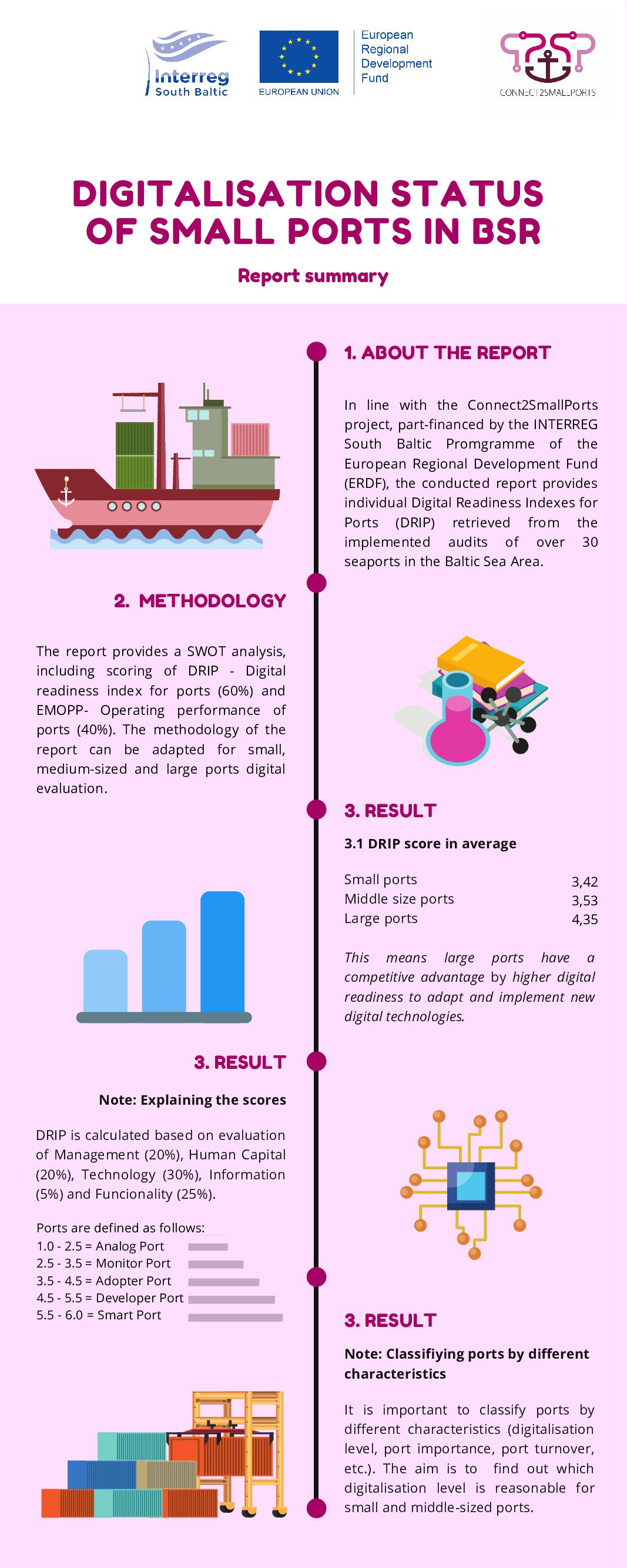Digital Auditing in Small Ports
The Working Package No. 3 dealing with Digital Auditing in Small Ports is regarded as a state-of-the-art package. It develops a tool for the examination of a digitalisation status in South Baltic (SB) Small Ports. This digitalisation tool refers to a process-based approach that is applied to a given port. Furthermore, it covers different aspects that enable to track and evaluate the use of novel digital technologies in a port and its terminals and by port operators. Such technologies are already used by big companies or core ports. The aim of these digital technologies is to improve cargo flows, environmental and economic efficiency, e.g. reduction of parking-related transport in port terminals; reduction of delays; shorter travel times; safety and security (Blockchain); environmental compliance (dynamic traffic control; les congestion); cost reduction; availability and reliability; financial business concepts; client attraction (e.g. from core ports) and branding.
Once the tool is developed, it will be applied in SB small ports. The auditing will be implemented by Project Partners, Associated Partners and other small ports – fellow ports. This will ensure the use of best knowledge and reduce any non-comfortability in terms of being observed by “big counterpart” (big core ports). Subsequently, evaluation and progress recommendations will be given to ports – what and how they could improve. The ports will be benchmarked and indexed with the online Connect2Small Ports digitalisation index (also used beyond the project life).
Working Package Outcomes:
The conducted report provides a benchmarking of the implemented digital audits and the respective results. In line with the Connect2SmallPorts project, part-funded by the European Union in the frame of the INTERREG South Baltic programme, the consortium approached small and medium sized ports in the South Baltic Sea Region. In addition, ports from the Baltic Sea, Northern Sea and Mediterranean Sea were included as benchmark and examples for other sea areas. The participating ports are compiled into the benchmark template as introduced in chapter three and indexed according to their performance and readiness for digitalization. It contains the rewarding (involving authorities) and future use outlook.
Click here to get the full report.
The results are also illustrated on our interactive digital map.
Development of State-of-the-Art on Blockchain technologies in Ports and Terminals
The report was developed in close cooperation with the state-of-the-art report in Working Package 4, therefore, we highly recommend to check it out here as well.
The report is based on research for best practices and knowledge as a collection and analysis of the information and materials. Furthermore, it provides an accumulation of the information to the SB region and the given conditions of the small ports. In the first stage, eight small and medium sized ports of the South Baltic Region (partly Project and Associated Partners) are analyzed regarding their digital readiness and available technologies.


